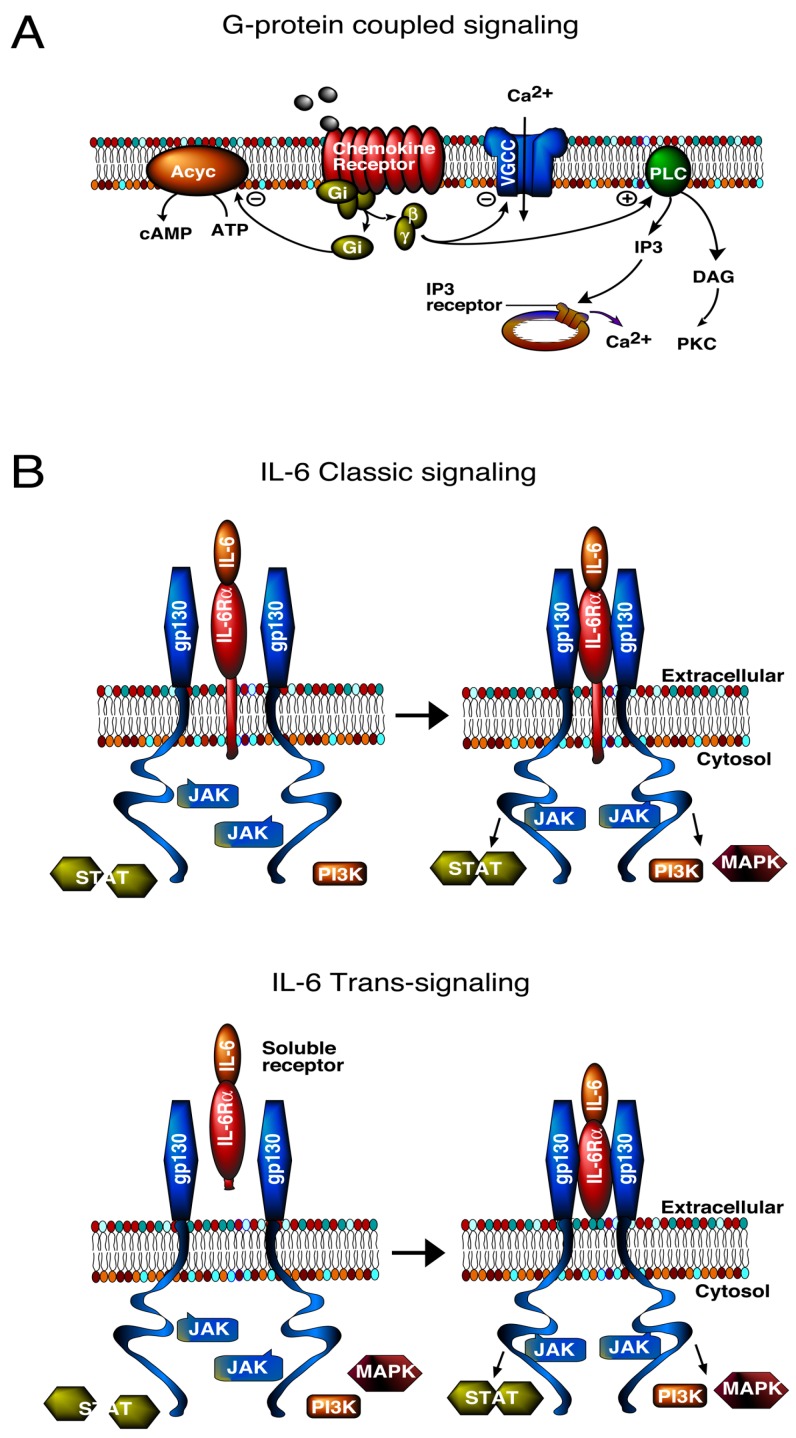Figure 1.
Diagrams showing signal transduction pathways used by chemokines and the proinflammatory cytokine IL-6. A plus sign within a circle indicates activation of the target molecule and a minus sign within a circle indicates inhibition of the target molecule. (A) Agonist binding to the G-protein coupled receptors (GPCR) initiates dissociation of the G-protein heterotrimer coupled to the receptor into Gα and Gβγ subunits. The Gα and Gβγ subunits then activate or inhibit downstream effectors. These effectors include ion channels, such as voltage-gated calcium channels (VGCC), and signal transduction molecules including phospholipase C (PLC) and adenylate cyclase (Acyc). Activation of PLC leads to the production of other signaling molecules including diacylglycerol (DAG) and inositol trisphosphate (IP3), and downstream activation of protein kinase C (PKC) and inositol trisphosphate receptors (IP3R), which regulate the release of calcium from intracellular stores; (B) IL-6 can signal through either a membrane bound (classic signaling) or a soluble (trans-signaling) IL-6R. The IL-6/IL-6R complex interacts with gp130 to activate the JAK/STAT signaling pathway. In addition, the IL-6/IL-6R/gp130 complex can activate RAS/mitogen-activated protein kinase (p44/42 MAPK, also called ERK1/2; MAPK) and phosphatidylinositol-3 kinase (PI3K) signaling pathways. All three signaling pathways activate additional downstream signaling molecules and effectors.

